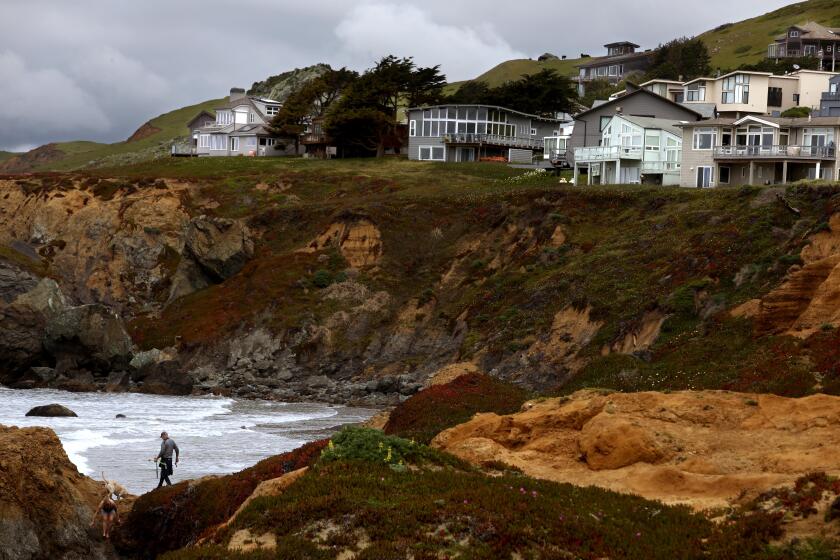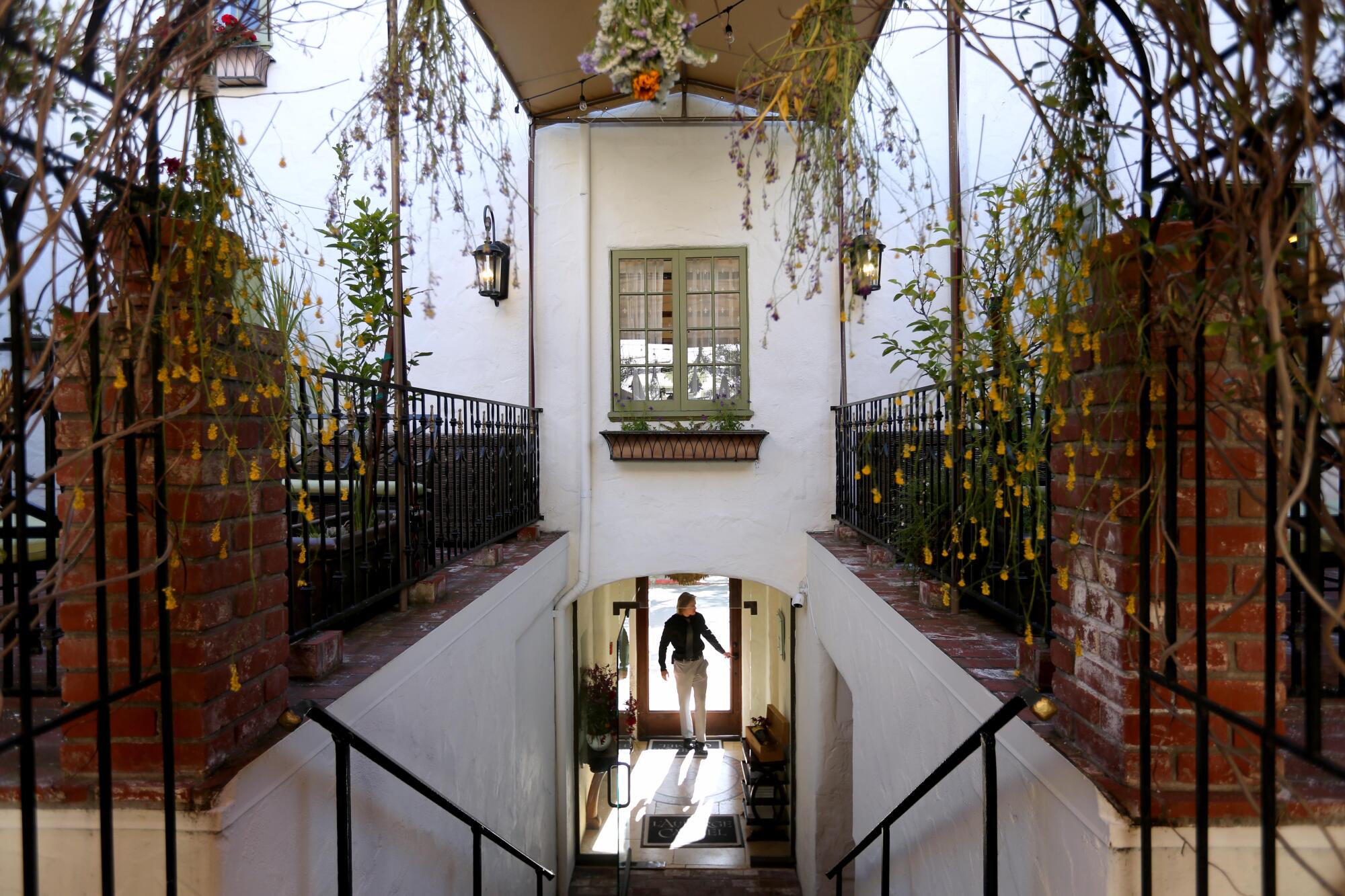
- Share via
CARMEL-BY-THE-SEA, Calif. — People call it “The Pit.”
It’s a massive, unsightly hole in the ground — the site of a construction project in downtown Carmel-by-the-Sea whose previous owners ran out of money six years ago, leaving behind nothing but concrete, rebar and hard feelings.
In 2020, The Pit was purchased by Patrice Pastor, a billionaire real estate developer from the tiny European nation of Monaco, for $9 million.
Last year, he plopped down $22 million for a much prettier property: Cabin on the Rocks, the only oceanfront home ever designed by famed architect Frank Lloyd Wright.

For the record:
8:08 a.m. July 5, 2024An earlier version of this article said the seaside property of Rocky Point in Big Sur has views of the Bixby Bridge. It looks out onto Rocky Creek Bridge.
And in mid-June, he got approval from the California Coastal Commission for his “visionary plan” to restore public access at Rocky Point, a seaside property he bought for $8 million in nearby Big Sur with views of the picturesque Rocky Creek Bridge.
Pastor has been on a buying spree in and around Carmel-by-the-Sea, dropping more than $100 million on at least 18 properties over the last decade. So much so that his presence has become a source of intrigue, and for some, downright suspicion, in this moneyed one-square-mile town of 3,200 people.
Pastor bought the Hog’s Breath Building, the site of the pub once owned by actor Clint Eastwood. He bought the L’Auberge Carmel hotel, which houses a Michelin star restaurant. He snapped up the Der Ling building, a 1924 shop, done in fairytale-style architecture next to a stone pathway leading to a hidden garden.
“When someone comes in with so much money and can use that money for influence on so many things, that’s … scary in any community,” said Dee Borsella, who owns a custom pajama shop across from The Pit. “Every person has the right to do this. But why is he picking Carmel?”
1
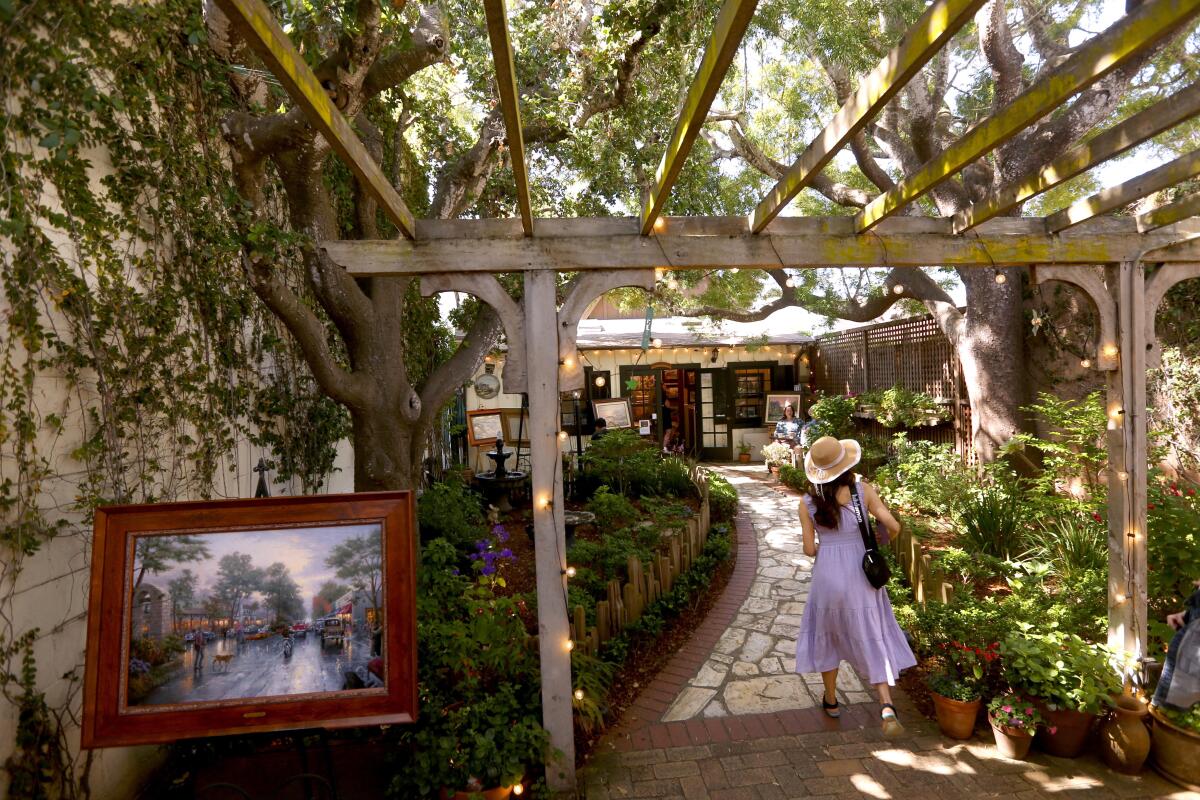
2
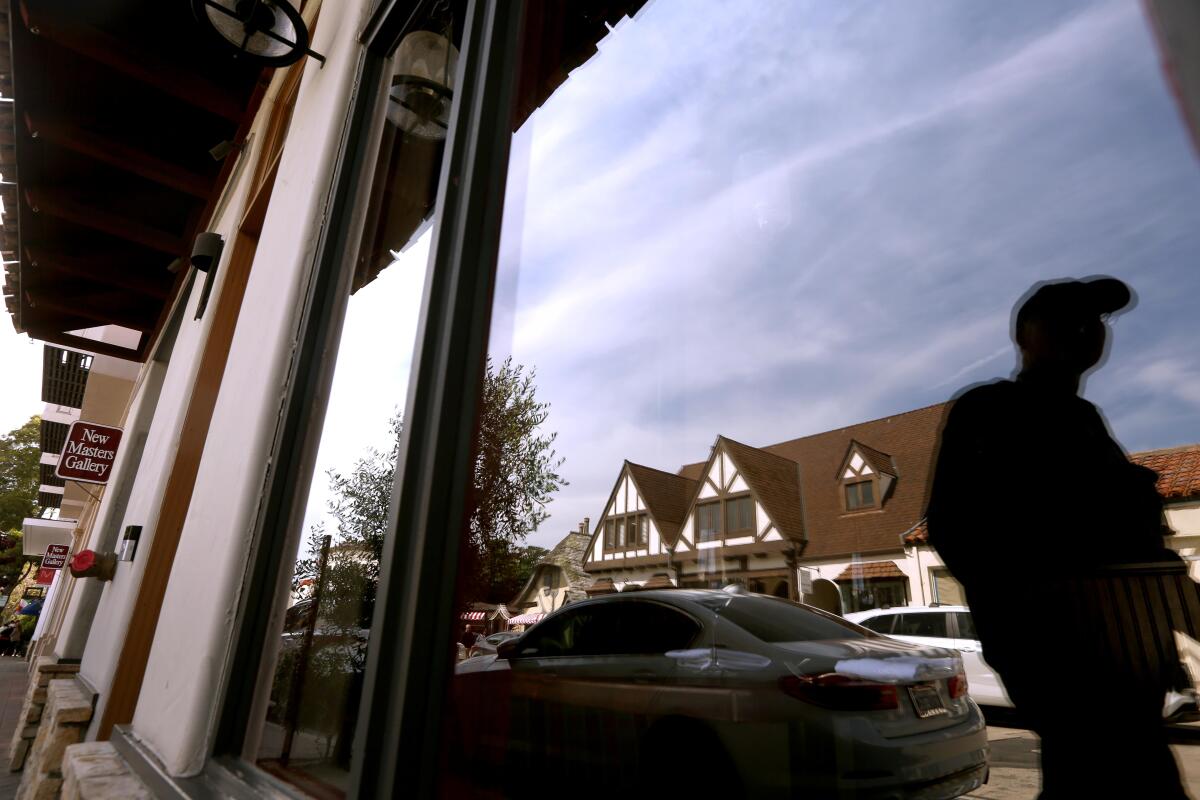
3
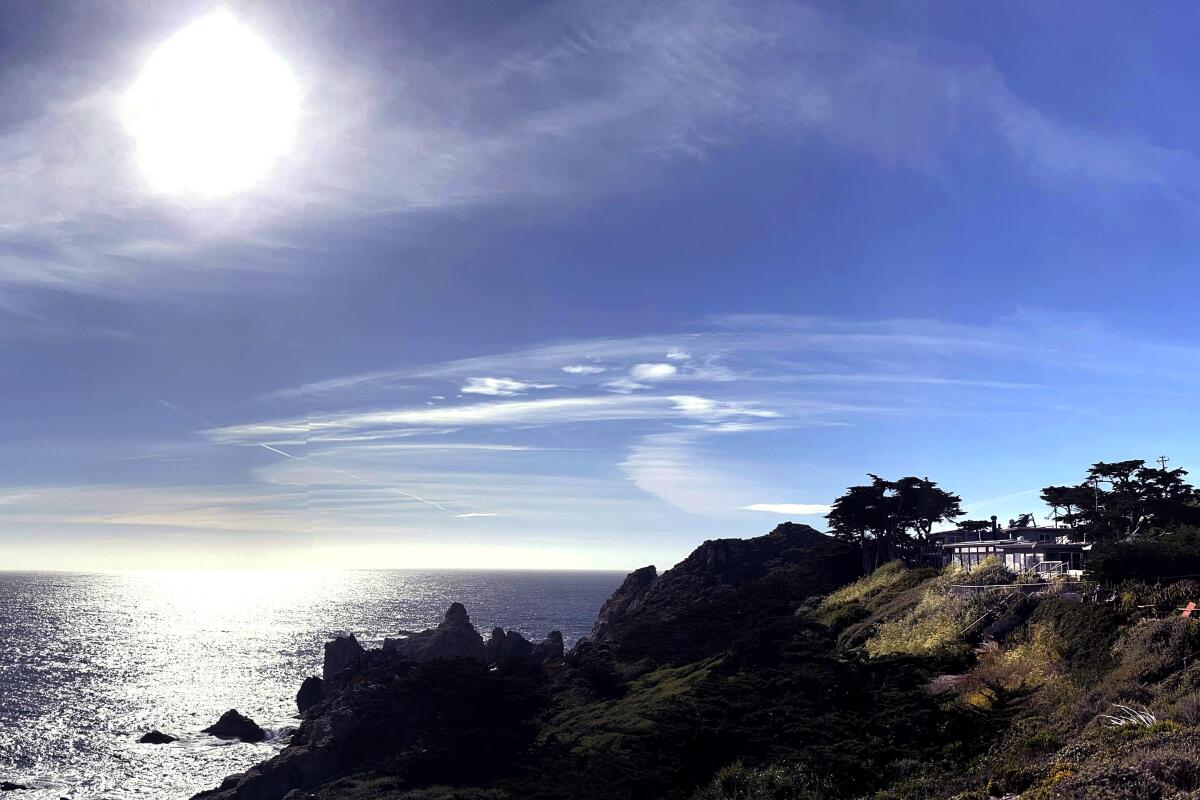
1. A visitor walks through the central courtyard of Der Ling Lane. 2. The Bingham Building on Dolores Street, reflected in a storefront window. 3. The Rocky Point Restaurant, one of the latest purchases by Monaco billionaire Patrice Pastor, rests on a bluff high above the Pacific Ocean in Big Sur.
Pastor is the scion of a powerful real estate family that built much of mega-rich Monaco, a dense, one-square-mile nation on the French Riviera.
He says he first came to Carmel-by-the-Sea at age 7 during a trip with his father, and that he had never seen his dad more relaxed. The memory stuck with him. He now owns multiple homes in town and visits several times a year.
“It’s not like he picked up a book one day and was like, ‘Let me find the best place to invest.’ It’s that he personally loves it here,’” said Claire Totten, a spokeswoman for Esperanza Carmel LLC, the local branch of his international real estate company.
Still, Pastor has created quite the buzz in this gracefully aging town where, according to Zillow, the typical home price is $2.2 million.
During a scuffle last summer, the city administrator took a swing at an art gallery owner who accused local officials of being xenophobic for slowing one of Pastor’s projects. And the billionaire’s local real estate portfolio burst into international headlines this year after an article by SF Gate quoted an anonymous business owner who said people were “terrified” of his intentions.
Soon afterward, Pastor showed up to a City Council meeting via Zoom and said he would “like to inform those who feel terrified by my presence” that he would be in town a few days later: “So I suggest they either take a vacation during this period or come and meet me for a relaxation class.”
Pastor — who, according to the French newspaper Le Monde, has squabbled over lucrative development contracts with associates of Monaco’s Prince Albert II — has more humble antagonists in Carmel-by-the-Sea: the City Council, the Planning Commission and the Historic Resources Board.
The city has rejected several of his design proposals, including two for The Pit.
Development — including upgrades to private homes — is notoriously slow here. The city strictly regulates architecture to maintain the so-called village character of this woodsy place. Carmel uses no street addresses (people give their homes whimsical names instead), and has no streetlights or sidewalks in residential areas.

Eastwood, who was mayor in the 1980s, got involved in local politics after fighting with the City Council over what he said were unreasonable restrictions on the design of an office building he wanted to erect. Pastor now owns that building.
Pastor “loves that it’s a bit idiosyncratic,” Totten said. “Carmel is a little bit etched in time. The world moves on, but Carmel is still Carmel.”
Pastor’s local defenders question whether he is being discriminated against because he is too rich.
“He’s had a hard time with the city,” said Karyl Hall, co-chair of the Carmel Preservation Assn. “It’s one thing after another after another. They’ve just beaten him down incredibly.”
“There’s no question that he gets more scrutiny,” said Tim Allen, a real estate agent who has handled most of Pastor’s local purchases, including the Frank Lloyd Wright residence, also known as the Mrs. Clinton Walker House.
Completed in 1952 and listed on the National Register of Historic Places, the architectural jewel had been kept within the original owner’s family until Pastor bought it in February 2023. The 1,400-square-foot house, on a rocky bluff jutting into Carmel Bay, has a hexagonal living room and stone masonry walls shaped like a ship’s prow cutting through the waves.
In a 1945 letter to Wright, artist Della Walker wrote: “I am a woman living alone — I wish protection from the wind and privacy from the road and a house as enduring as the rocks but as transparent and charming as the waves and as delicate as a seashore. You are the only man who can do this — will you help me?”
The architect replied: “Dear Mrs. Walker: I liked your letter, brief and to the point.”

Allen said Pastor’s purchase includes the original furniture, because “he’s buying a piece of history” — albeit one that “needs a ton of work,” including an expensive new roof.
Last spring, Esperanza Carmel LLC, applied for a Mills Act contract for the site, a tax break for owners of historic properties who commit to restoring and preserving them. Although the City Council had approved such a contract for the home’s previous owner, some council members balked at giving the tax break — a saving of an estimated $1.5 million over 10 years — to Pastor and postponed a decision for several months.
One resident, in a letter to the City Council, wrote: “I doubt the applicant is in financial hardship ... I’m not in favor of giving handouts to ultra wealthy property owners.”
Before the council approved the tax break this spring, city officials tried to persuade Pastor to give public tours of the house and to make direct payments to local schools (which are partly funded by property taxes) — requests not made of applicants for other properties. Pastor refused.
Via Zoom, Pastor told the council he would “maintain this wonderful house in perfect condition, even if only to continue to bother those jealous people who will never have access to it.”
City officials are waging another only-in-Carmel fight with Pastor over a mixed-use development and subterranean parking garage on Dolores Street that he has been trying to build for more than three years.
Plans submitted to the city in 2021 called for the demolition of a former bank annex once used as a community room. Because it was less than 50 years old, it did not qualify as a historic structure — but after it turned 50 in October 2022, the Carmel Historic Resources Board voted to add it to the city’s historic resources list.
Pastor agreed to build around the annex.
Then, another issue arose: The project would require the removal of a small concrete wall, decorated with exposed aggregate and inlaid rocks, built in 1972 by a man local historians dubbed the “father of stamped concrete.”
The City Council last fall said the wall was too important to be moved and sent Pastor’s company back to the drawing board.
Allen, the real estate agent, decried the delays as petty grievances. Pastor’s proposed developments, he said, will add apartments, parking and public restrooms — all of which are sorely needed.
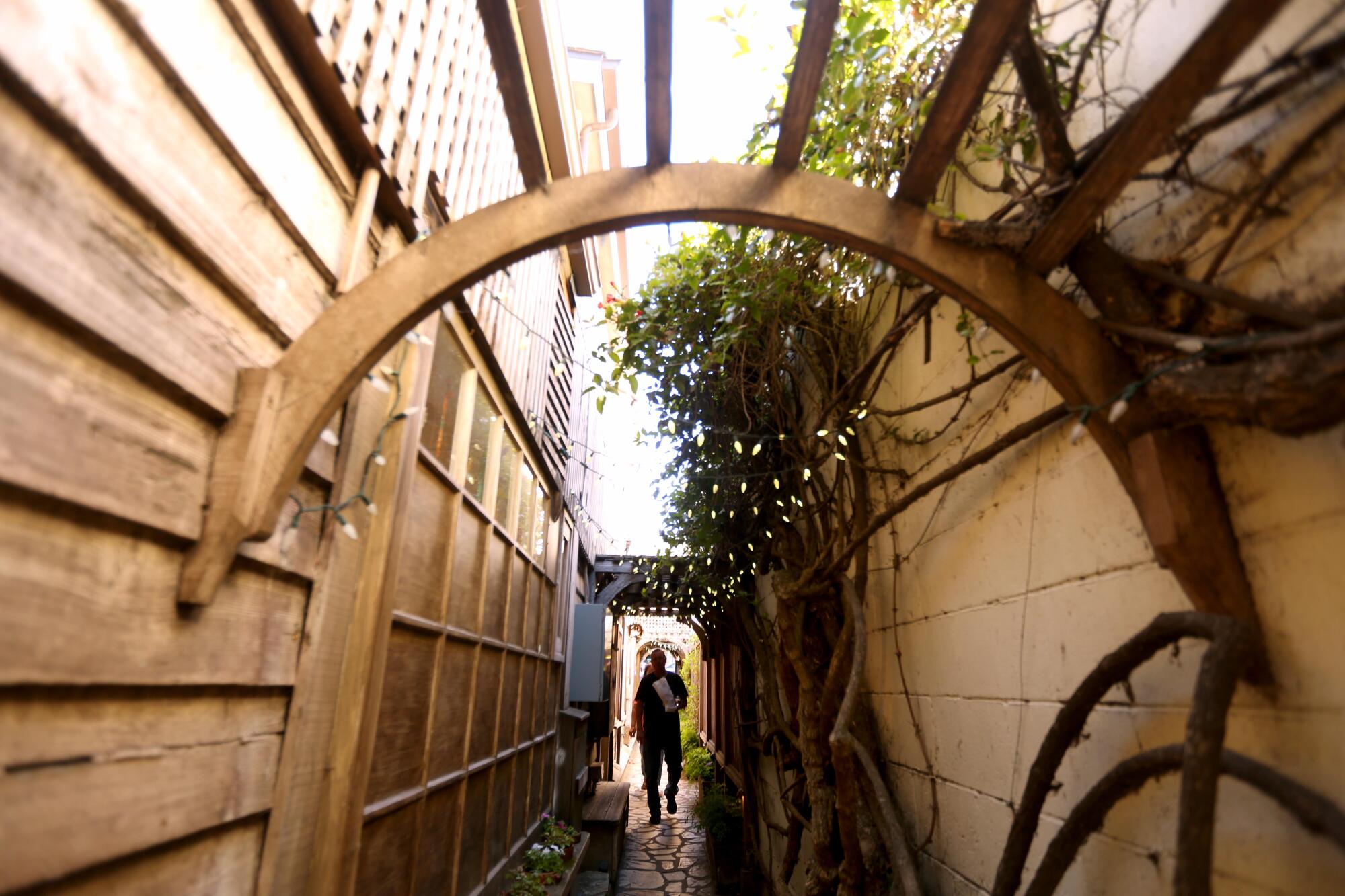

“He doesn’t just buy to terrorize people,” Allen said. “He buys because it’s a good investment.”
Mayor Dave Potter said it is tough for anybody to build here and that Pastor is being treated fairly.
“We pride ourselves on our uniqueness,” he said. “You don’t get to just come in and build whatever you want. We don’t care if you’re a movie star or a mega-millionaire. You have to play by the same rules everybody else does.”
Hall and Neal Kruse, co-chairs of the grassroots Carmel Preservation Assn., are adamant, if surprising, supporters of Pastor.
They believe modern architecture — which they describe as ‘Anywhere, USA’ buildings with sterile facades and box-like structures — poses an existential threat to Carmel-by-the-Sea, which depends on tourists drawn to its cottages, courtyards and secret passageways.
Hall, a retired research psychologist, said she talks regularly with Pastor, whom she described as “so nice, so charming and so heartfelt,” and noted that he has several modern-architecture projects in the works overseas.
“He said, ‘Karyl, you’d hate them,’” she said, laughing.
Hall and Kruse started the preservation association in response to the first proposal for The Pit, a contemporary design approved by the Planning Commission for the previous owners. They called that planned edifice “the ice box.”
Hall said they were heartened by Pastor, who proposed more traditional buildings for The Pit.
Longtime residents “remember Carmel, and we remember the sacredness of it and why people come here,” said Kruse, an architectural designer. “We’re the ones that are largely concerned about the loss of character. But Patrice played a central role in reassuring the residents that he would help that not happen.”
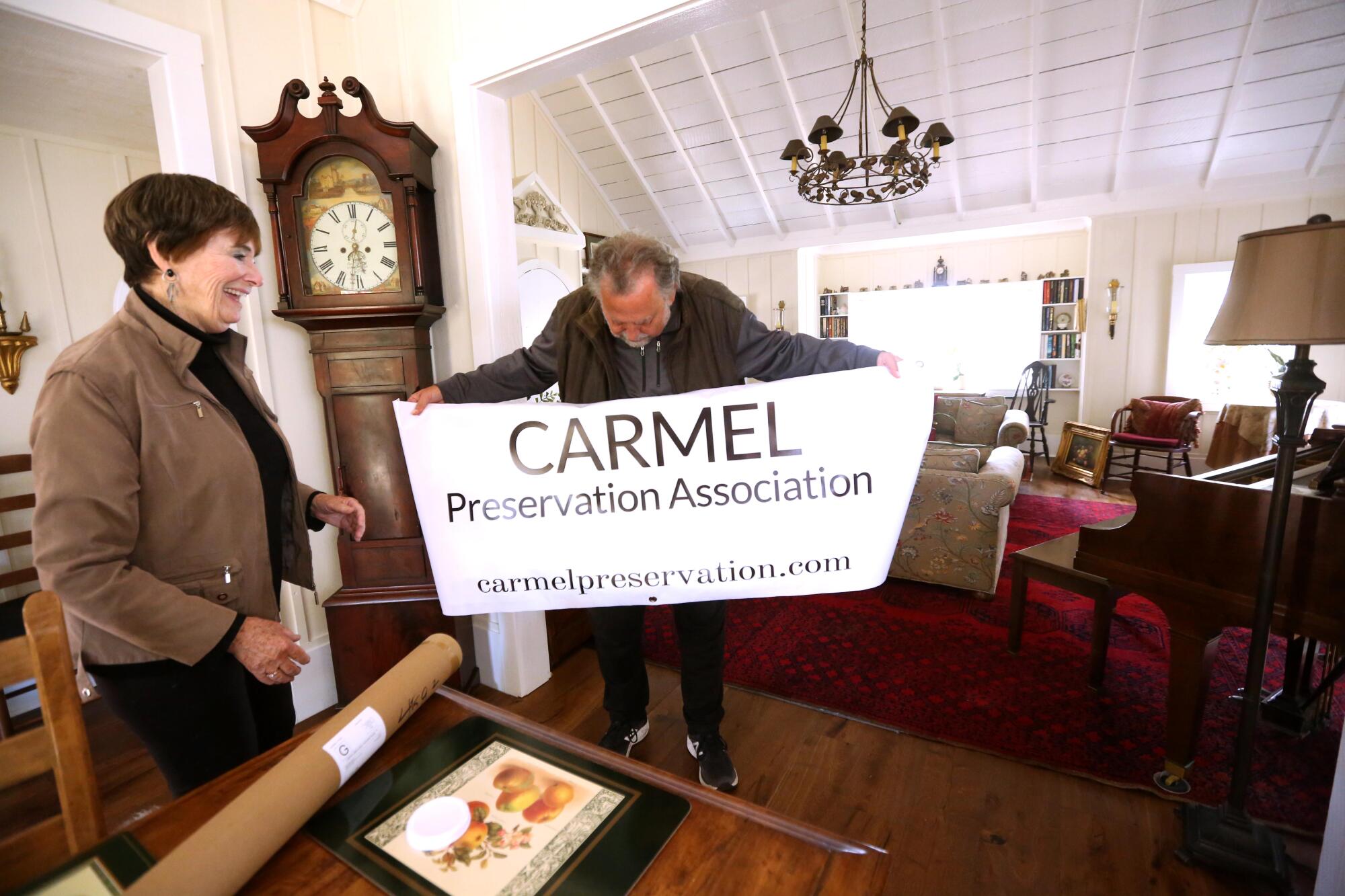
Over more than two years, the Planning Commission rejected two Esperanza Carmel designs for The Pit before approving a third last August for a mixed-use project with apartments, stores and an underground parking garage. Construction has not yet begun.
The 91-year home of the Carmel Art Assn. — of which surrealist painter Salvador Dali was a member — is next door to The Pit. The demolition of two buildings there, which started in 2017, caused the art gallery to shift so much that it damaged its new roof, which started “leaking all over the place,” said Jeff Becom, president of the art association’s board.
“It’s on a sand dune. You dig a big hole and you vibrate it for several weeks, it starts to slip,” Becom said. “It’s an important place, and we didn’t want it to fall into The Pit.”
With Pastor’s plans, “I have much more hope than I’ve had for some time,” he said.
Across the street, Borsella, owner of the sleepwear shop Ruffle Me to Sleep, is more dubious. She keeps prints of the architectural designs tucked under colorful tissue paper because customers ask her about The Pit every day.
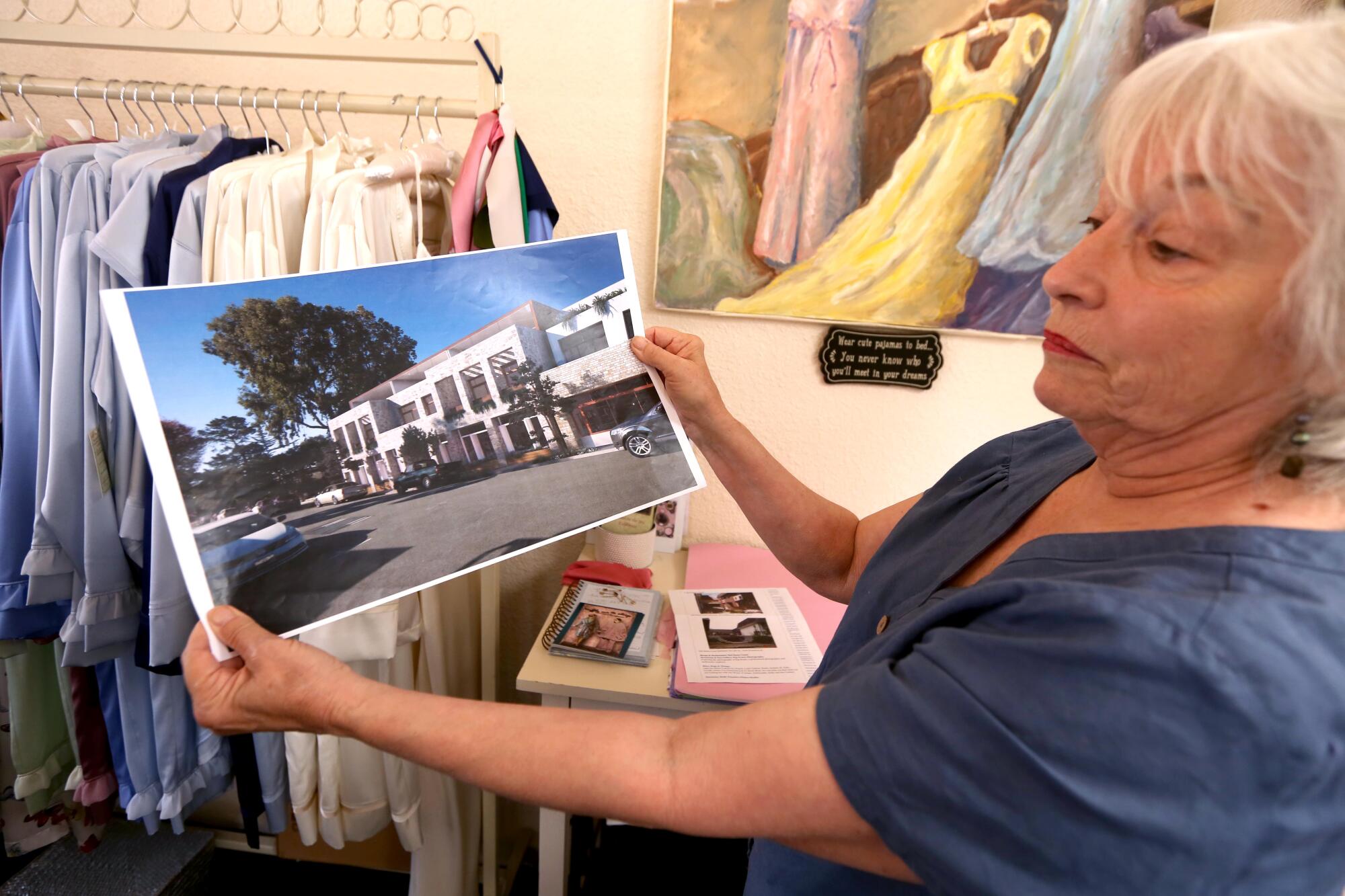
Borsella, who used to work in one of the now-demolished buildings, thinks Pastor’s planned complex is too big. She doesn’t like its mezzanine. And she does not think the city should compromise its building standards just because people are sick of looking at a hole in the ground.
Pastor, she said, seems to be on a charm offensive “to ease the collective opinion that somebody’s invading our property, our town.” A few weeks ago, he stopped in her shop to introduce himself.
“I’m a bit of a lion,” she said. “I knew he was kind of trying to come over and pet me. I felt like he was trying to win me over.”
Marin County, with its rugged beaches and pristine lands, has put a hard cap on short-term rentals, setting off furious debate: Are vacation rentals ruining California’s coastal towns? Or opening up the coast to people who can’t afford to live there?
In 2021, Pastor bought another coastal gem in Big Sur, about 10 miles south of Carmel-by-the-Sea: a 2.5-acre cliffside parcel off Highway 1 occupied by the closed Rocky Point Restaurant.
Pastor inherited a slew of issues with the land, including investigations by the California Coastal Commission into unpermitted development by the previous owners and the use of locked gates and “No Trespassing” signs to block access to public land.
The Coastal Commission struck a deal with Pastor to clear the violations and potential fines if he restores the poison oak-covered bluffs and trails and removes the gates. Pastor also agreed to add public bathrooms, parking and electric vehicle chargers.
The deal is limited to clearing the violations — not the redevelopment or reopening of the restaurant.

On a recent blue-sky Monday, Jay Davisson, chief executive of a Carmel-by-the-Sea luxury home-building firm, led family members visiting from Detroit and Tampa, Fla., to a bluff top on the property where they could see Rocky Creek Bridge.
Davisson, who recently moved to Carmel from Atlanta, said he considered buying Rocky Point, but it was “a little too expensive.” He loves Pastor’s plans to restore access — and has been closely following the news and scuttlebutt about his other purchases.
In such a small town, he said, “everybody talks. But I like the fact that it’s growing.”
More to Read
Sign up for Essential California
The most important California stories and recommendations in your inbox every morning.
You may occasionally receive promotional content from the Los Angeles Times.
